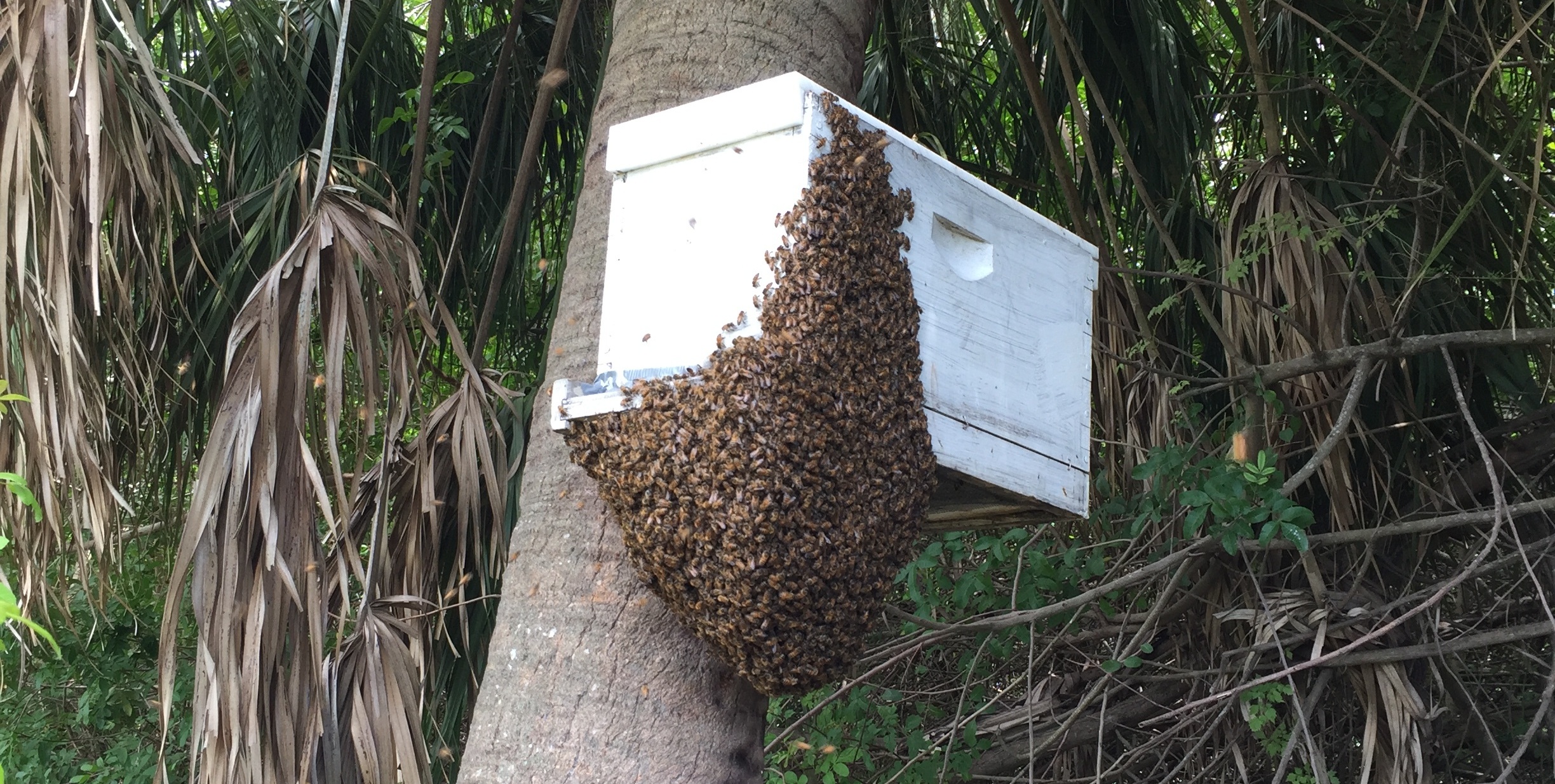Why Do Bees Swarm?
Swarming is the natural process honeybees use to reproduce new colonies. Swarming behavior in honeybees usually coincides with seasons when an abundance of nectar is available to the bees. When a colony of honeybees feel that they have been successful in filling their hive space with comb, brood, pollen and nectar, they usually want to swarm.
Swarming begins with the worker bees drawing out queen cups along the bottom and edges of the honeycomb. The queen then begins laying fertilized eggs in the queen cups. The worker bees use beeswax to draw the queen cups into queen cells around the eggs. When the eggs hatch into larvae, the worker bees use the abundance of pollen and nectar available to create royal jelly which they generously deposit into the base of the queen cups for the larvae to gorge on. The difference between a worker bee and a queen bee is in the amount of royal jelly they were fed as a larvae. A worker bee is fed only a small amount of royal jelly and is not a fully developed female bee. A queen bee is fed a generous amount of royal jelly and is a fully developed female bee, able to mate with drones and lay fertilized eggs.
Swarm cells being drawn out on the bottom of the comb.
While the new queen cells are developing, the mother queen stops eating and begins losing weight so that she is able to fly. While the queen is fasting, the worker bees that are going to swarm with her are filling their honey guts with nectar so that they will have the resources needed to build comb and establish a new hive.
Shortly before the new queen cells begin to hatch, the old queen leaves the hive with about 60% of the worker bees. Seeing a swarm leave a hive is a sight to behold! A wild whirlwind of bees explodes out of the hive forming a chaotic cloud of bees flying every which way. Eventually this cloud of bees lands in a large cluster in a tree or on whatever object that happened to be in the wrong place at the wrong time. While swarming bees look and sound frightening, they are actually at their most harmless state. Filled with nectar and with no brood to protect, they have little to no interest in stinging anyone. A cluster of bees that have recently swarmed are also the easiest for a beekeeper to remove before they get established inside a wall or tree where they are much more difficult to remove.
From the swarm’s cluster, scout bees fly off to find a new location for the swarm to call home. These scout bees are looking for a cavity just the right size for the swarm and in just the right location. The scout bees will fly into potential hive spaces and walk all around the inside of the cavity as they measure the space with their feet. The scouts then return to the swarm and communicate potential new locations with a waggle dance. The bees’ waggle dance has been studied and proven to communicates direction and distance of nectar sources and new hive locations. When a majority of scout bees have agreed upon the best location, the entire swarm takes off from their resting place. Once again, a wild cloud of bees moves through the air.
Upon arrival, the swarm settles on the new location and begins to move inside. The worker bees that have filled themselves with nectar produce an abundance of wax and lose no time in drawing out new honeycomb. The queen begins laying eggs in the new comb and the forager bees get to work gathering nectar and pollen to maintain the new hive.
Back at the original hive, the first new queen is emerging from her queen cell. After hatching, she begins to seek out the other queen cells and stings her rival queens through the sides of the queen cells before they have a chance to emerge. Sometimes other queens hatch before the first queen has a chance to kill them. These queens often form smaller after-swarms that also leave the hive to establish new colonies as well.
The new virgin queen will stay in the hive for about a week as the remaining worker bees get accustomed to their new queen. She will then leave the hive in the afternoon for about three days in a row to go on mating flights. Over the course of those few days she will mate with up to 40 different drones in mid-air. During mating the drones penis’ explode and they fall to the ground and die! While the drones are dead their genetics will live on. The queen will store their sperm in her abdomen and lay millions of fertilized eggs for years to come from these few days of mating flights. She will take over the colony as the new queen mother and will stay in the hive until they feel they have been so successful that they are ready to swarm again!


